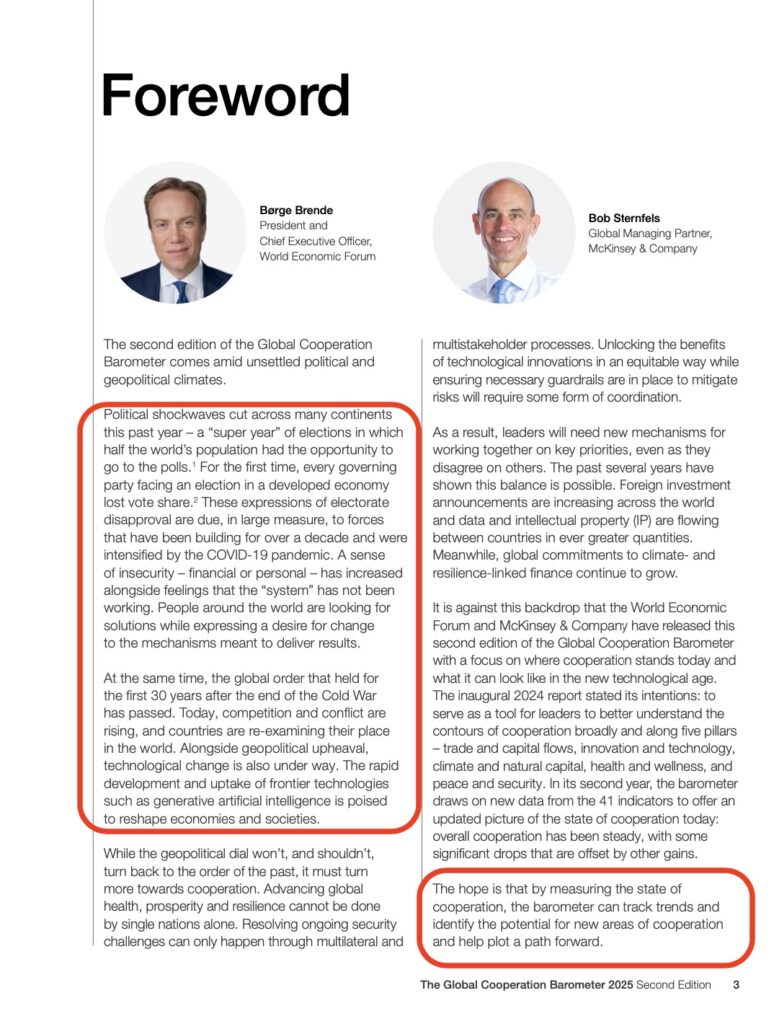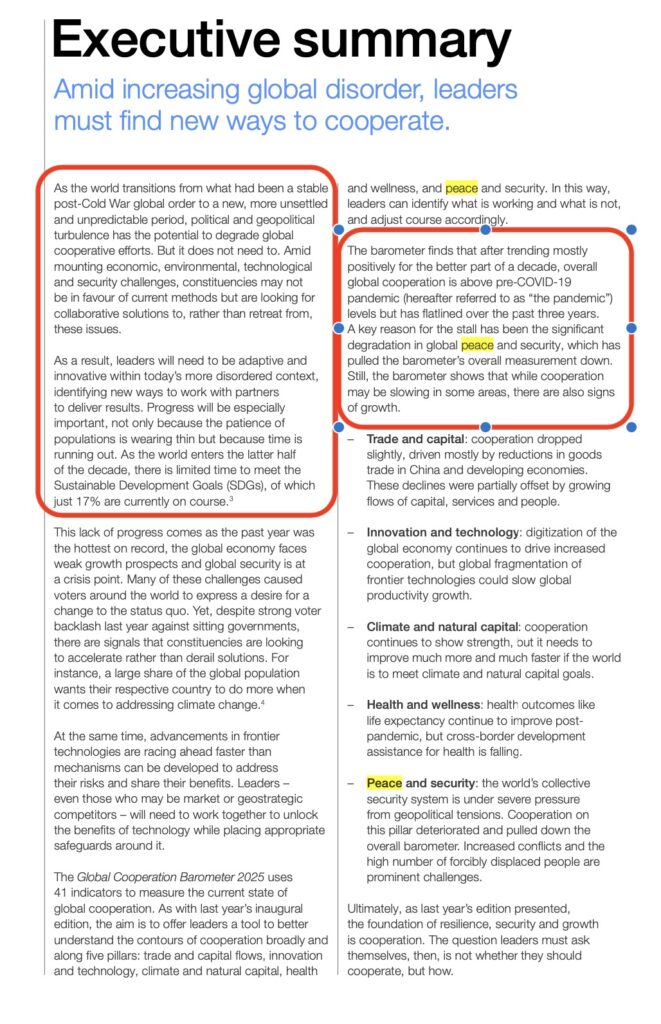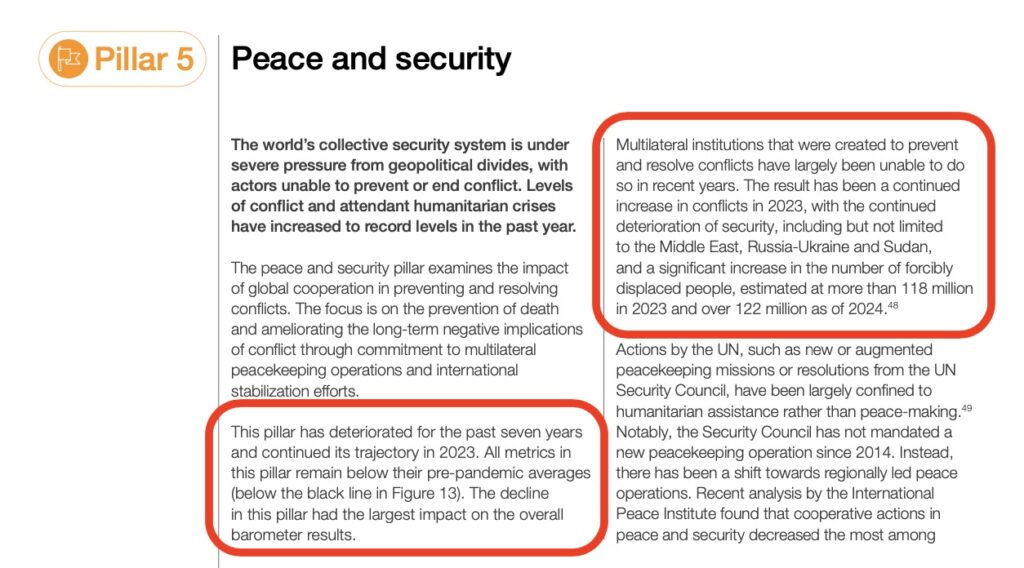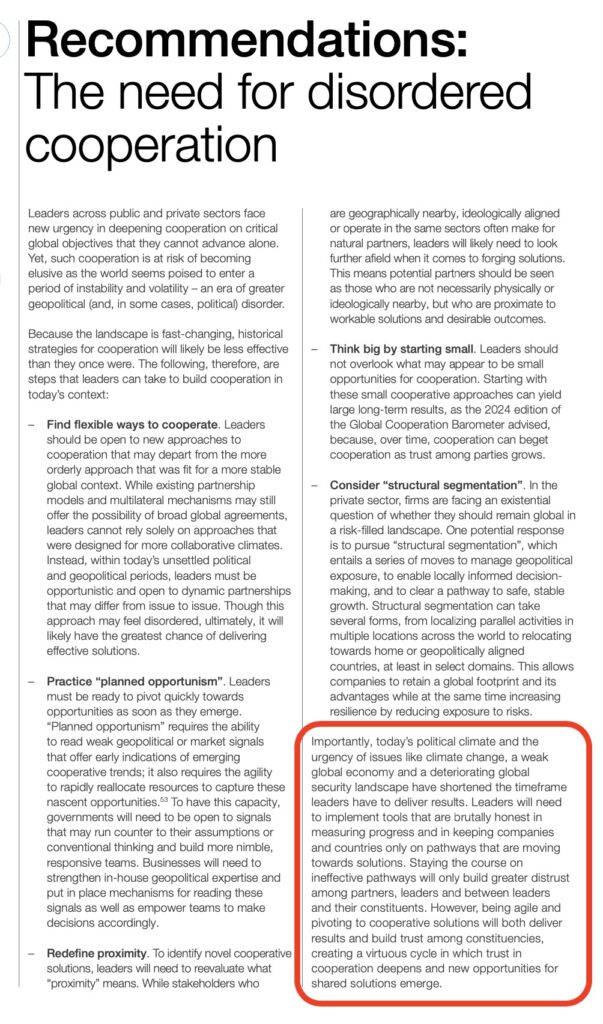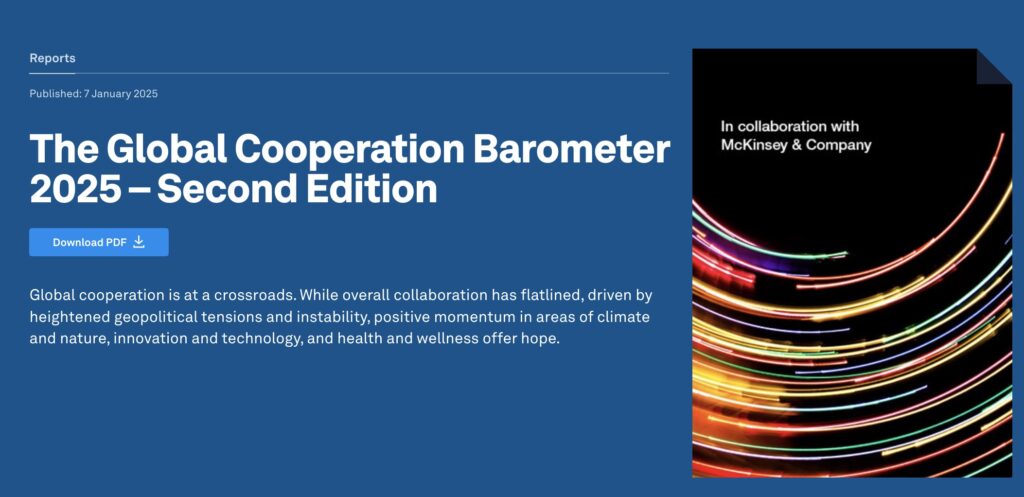9 Jan 2025
Collapse of World Economic Forum “Peace & Security” index exposes poor decision-making by global business leaders
Bangkok — A measurement index of global cooperation in the field of “Peace & Security” has fallen to its lowest level ever. As a result of the growing sense of insecurity and frustration with “the system”, the patience of the global public is “wearing thin because time is running out.” So says the Global Cooperation Barometer 2025 published by the World Economic Forum in the buildup to its annual caucus in Davos, Switzerland, from 20-24 January.
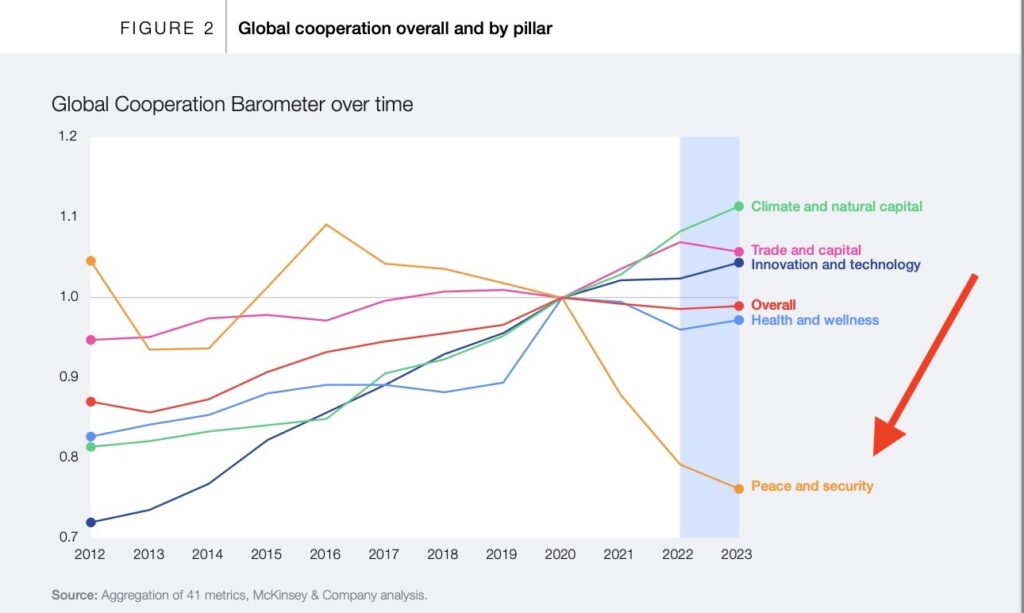
In pursuing solutions within this limited timeframe, the Barometer report says, “Leaders will need to implement tools that are brutally honest in measuring progress and in keeping companies and countries only on pathways that are moving towards solutions. Staying the course on ineffective pathways will only build greater distrust among partners, leaders and between leaders and their constituents.”
The objective of the WEF Barometer indices is to measure the “contours of cooperation” along five pillars: trade and capital flows, innovation and technology, climate and natural capital, health and wellness, and peace and security.” These indices then allow “leaders (to) identify what is working and what is not, and adjust course accordingly.”
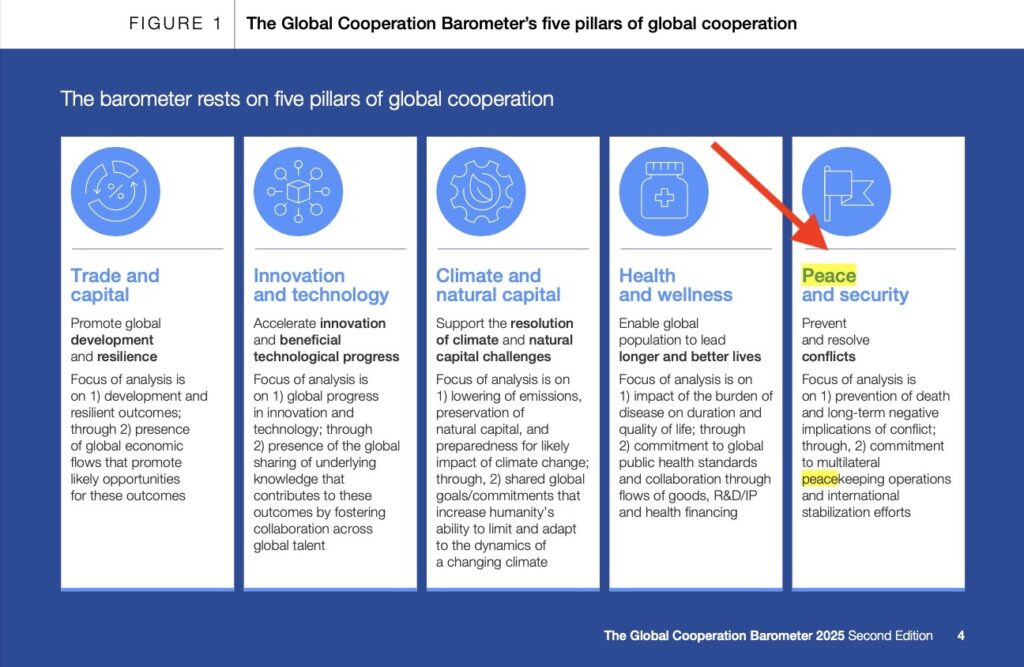
However, the WEF Barometer charts clearly show that while progress has been made on the first four pillars, the slide in “Peace & Security” has been both stark and sharp. The slide began in 2016, the first year of the first Trump presidency, and cascaded precipitously under the Biden administration, thanks to the wars in the Middle East and Russia-Ukraine.
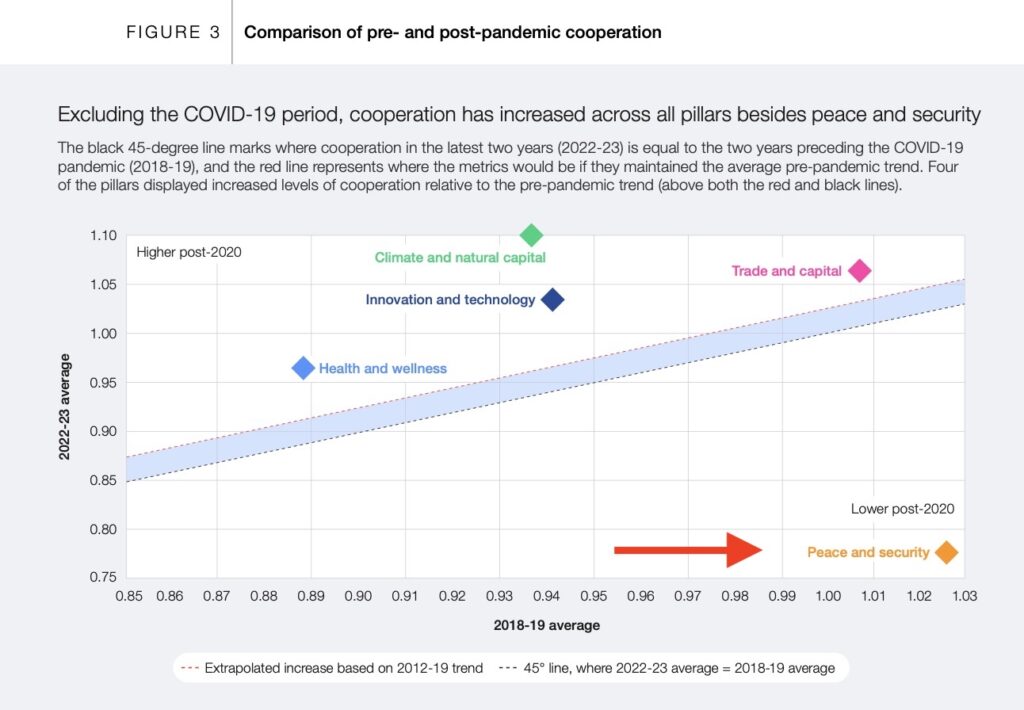
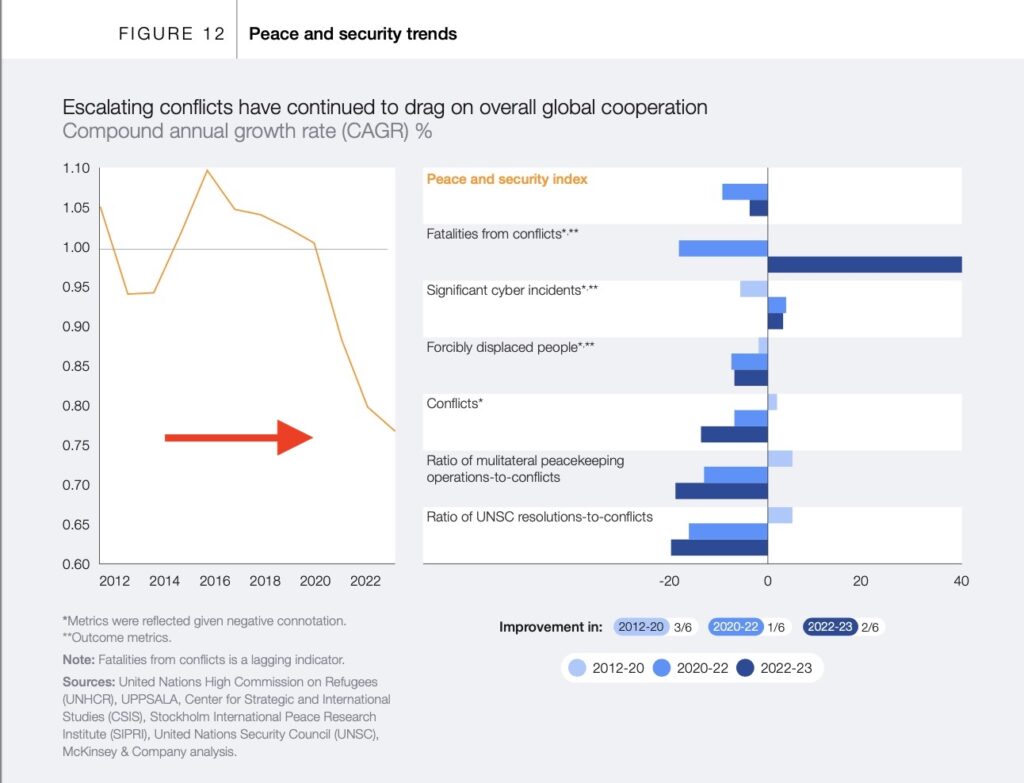
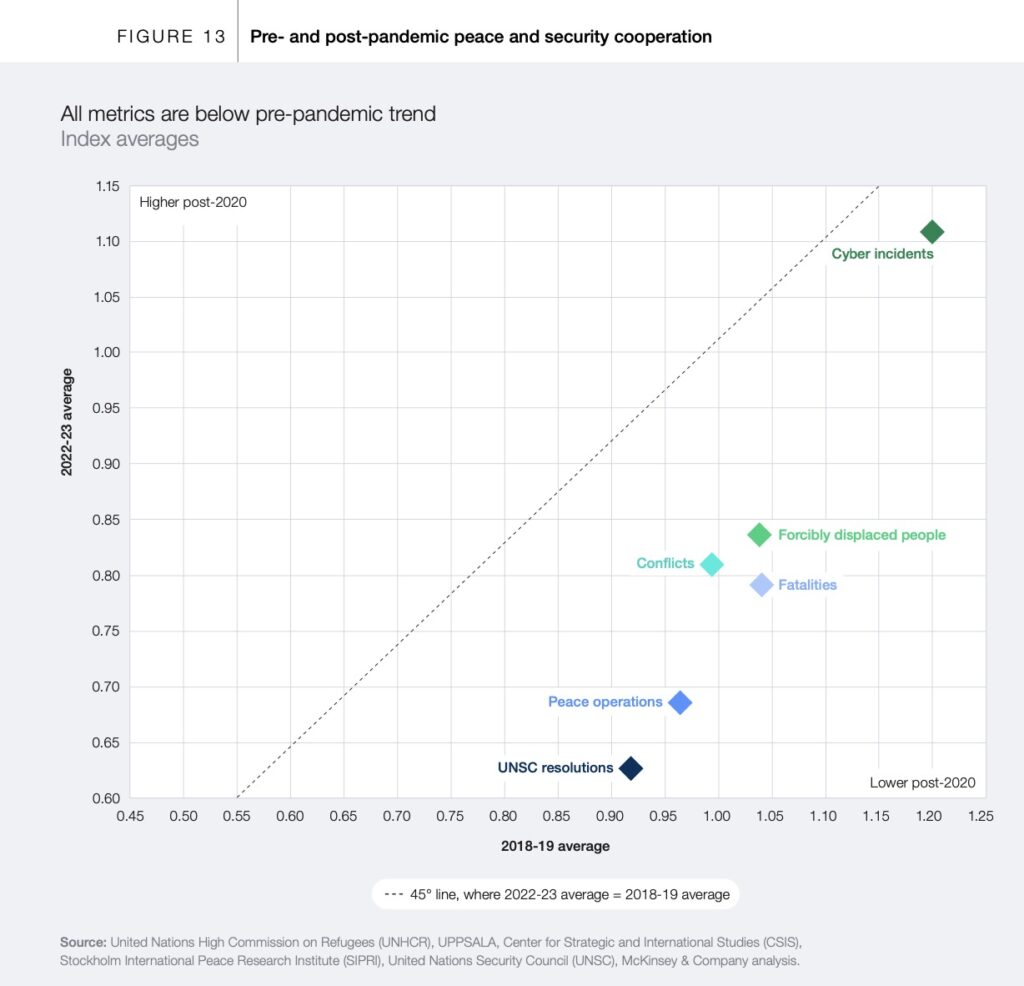
Now, even before the second Trump presidency has begun, clear indicators are emerging that it’s going to get worse.
Indeed, the decline can no longer be ignored because, as the report says, public patience is wearing thin and there is a looming threat of “greater distrust among partners, leaders and between leaders and their constituents.”
The Barometer indices raise a number of questions about the role of business leaders themselves. Were they blind to the steady deterioration in global “Peace & Security” conditions? Did they claim inability to do anything, as long as the four other Pillars were doing okay?
Bottom line question: Did CEOs, business leaders, management gurus and assorted other “visionaries and thought-leaders” contribute to the decline in the Peace and Security index by willfully ignoring, aiding and/or abetting its key contributing factors, viz., the rise of extremism, hate-speech, wars, conflict, ethnocentrism, the demise of justice, privacy, democratic freedoms, human rights and the rule of law?
Are they now worried about blowback?
As the Peace & Security index is the worst performing, the head-in-the-sand attitude of leaders in Travel & Tourism, the so-called “Industry of Peace” deserves extra-special scrutiny.
The conventional wisdom of always putting owners and creators of “material wealth” on the pedestal as being part of the solution is also worth scrutiny, especially as a deal-making businessman, convicted on multiple counts of criminality, is soon set to lead the world’s most powerful country.
In pondering “pathways towards solutions”, the Barometer notes that staying the course of the same “ineffective pathways” of the past will only make an already bad situation worse.
Business leaders, including those in Travel & Tourism, are typically inclined to blame all problems on politicians, government bureaucrats, the media, civil society, and basically just about everyone except themselves. So, perhaps the first step would be for them to carefully study this report and then introspect, reflect, rethink, review and reset their own decision-making.
Having seen many Travel & Tourism CEOs and industry leaders sweep these growing threats under the carpet over the years, I consider the WEF Barometer a damning indictment of the poor corporate decision-making over the years, the result of which is now becoming more than apparent.
Some key areas have been marked in the images below for time-poor business leaders to check out in detail.
